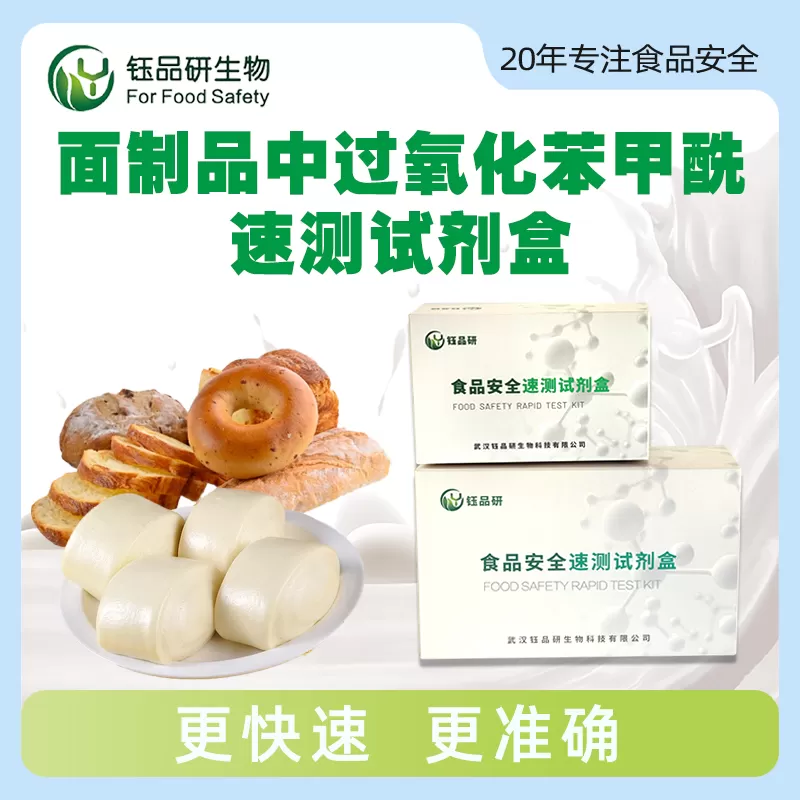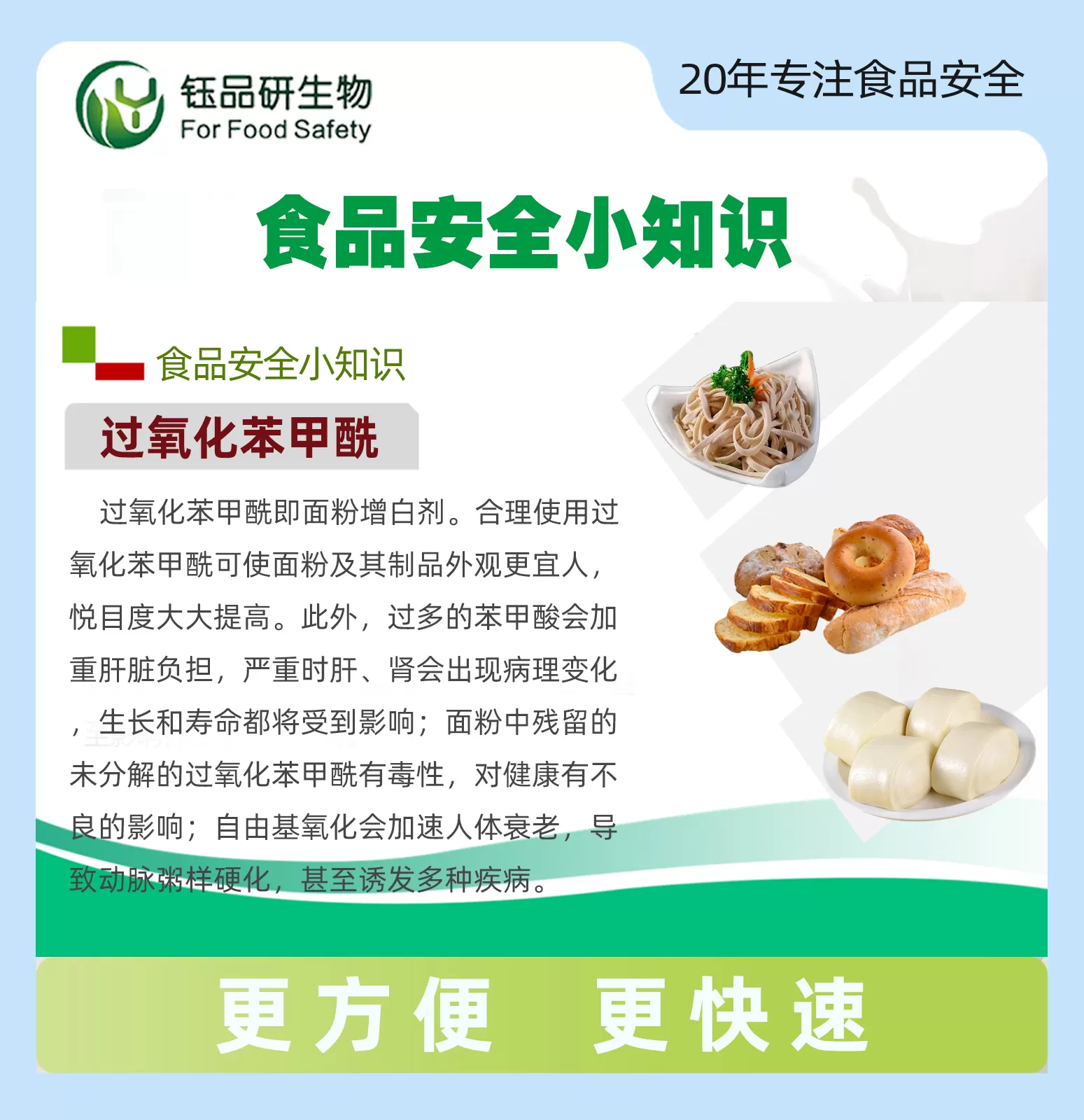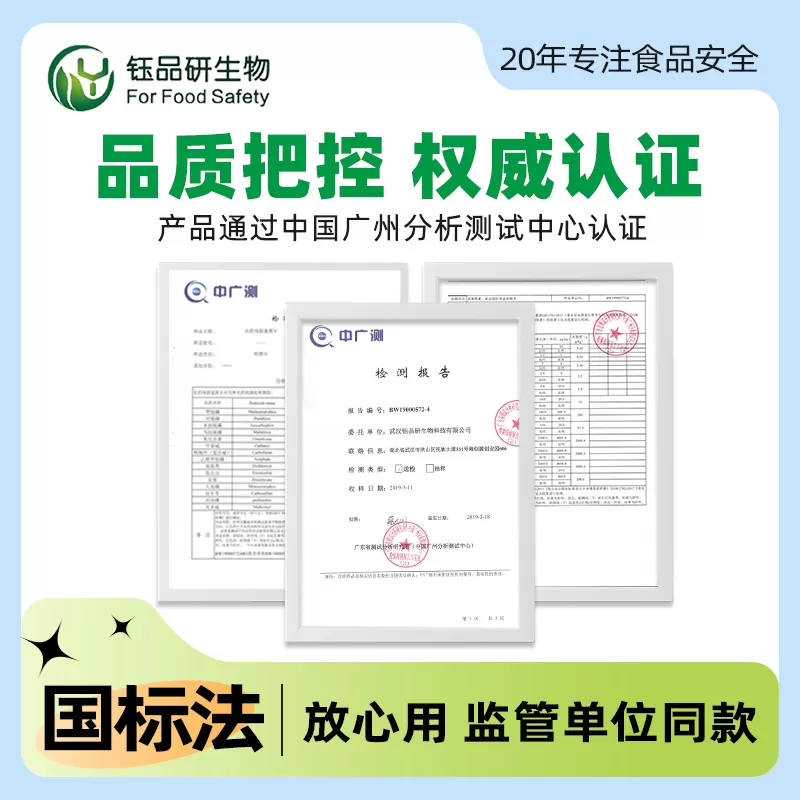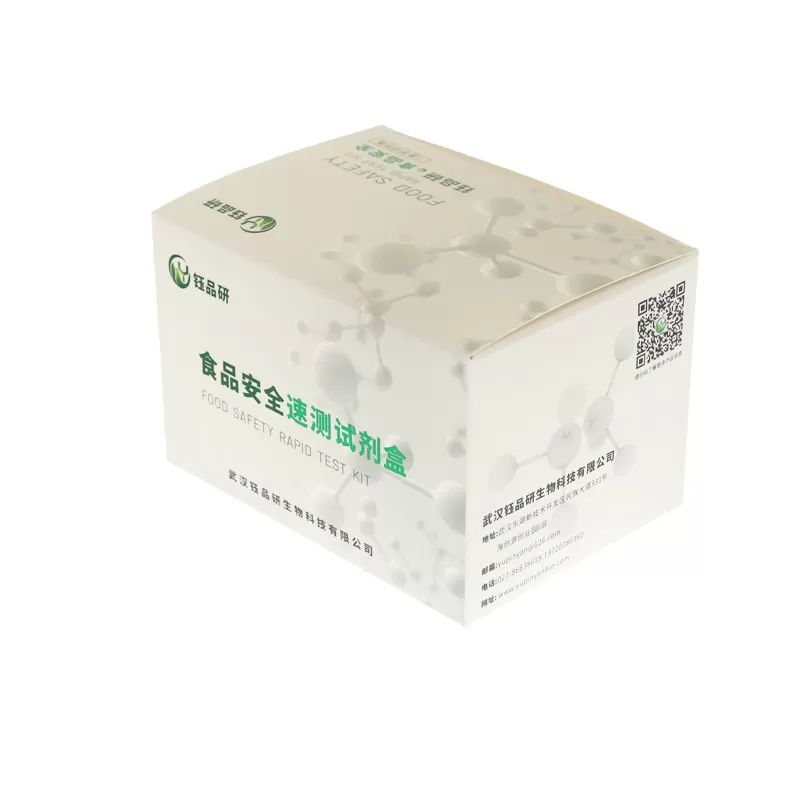noodle products benzoyl peroxide rapid test kit instruction manual
Product number: YPHM-46
1 introduction
benzoyl peroxide, also known as phthalide peroxide, it is obtained by the reaction of phthalide chlorine with hydrogen peroxide and base or sodium peroxide. It is a dangerous highly reactive oxidizing substance. It has the characteristics of significant whitening, preservative and increasing the ripening effect of wheat. Therefore, benzoyl peroxide is the most popular flour additive in the market in recent years. However, the addition of benzoyl peroxide will not only destroy the nutritional content of wheat, but also damage the liver function of the human body and cause liver function lesions and cause various diseases. The Ministry of Health and other departments issued an announcement "Ministry of Health and other 7 departments on the cancellation of food additives benzoyl peroxide, calcium peroxide announcement (2011, No. 4) ", since May 1, 2011, the production of food additives added to flour benzoyl peroxide, calcium peroxide.
2 detection principle
The use of strong oxidation of benzoyl peroxide, reagents can be oxidized, rereaction color, the use of color depth can be indirectly detected benzoyl peroxide content.
3 Detection range
wheat flour, and wheat flour products, steamed buns, bread, etc.
4 Technical index
Lower limit of detection: flour 30 mg/kg
5 sample determination
5.1 Weigh 1 gram of noodle product in a 7 mL plastic tube, add 3 mL of reagent A, close the lid tightly, shake violently for 2 minutes and then stand still. After the supernatant is clarified, it is used as the liquid to be tested.
5.2 Take 0.5 mL of supernatant with a straw and put it in a 2 mL colorimetric tube, add 1 mL of water, 3 drops of reagent B, and 2 drops of reagent C in turn, and shake well. Observe the results after 5 minutes.
solution is white, which is a negative result. If it is uncertain, it can be compared with the solution to be tested. If the color is the same, it is a negative result.
solution is yellow and purple, which is a positive result. If you need to quantify, you can compare it with the color card to determine the approximate content.
6 Precautions
6 If the reagent C is turbid, it can continue to be used after shaking up and down.
6.2 The water required for the experiment is pure water.
6.3 This product is only used for primary screening, and the final results are subject to the relevant national standard methods.
7 Storage conditions and valid period The reagent is stored in a cool and dry place at 4-30 ° C, and the valid period is 12 months.
8 Kit packing list
Serial number
Specifications
Composition
10 times/box
50 times/box
100 times/box
1
reagent A
1 bottle
1 bottle
1 bottle
1 bottle
2
reagent B
1 bottle
1 bottle
1 bottle
3
reagent C
1 bottle
1 bottle
1 bottle
4
7 mL plastic tube (recyclable)
1
2
5
5
2 ml colorimetric tube
1 bag
1 bag
1 bag
6
colorimetric card
1
1 117277980011
7
117277984





